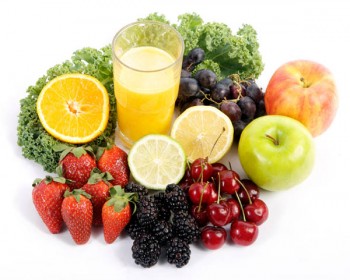Scientifically Speaking: The Future of Health
 Just because USANA recently announced its United for Youth campaign (watch the video) doesn’t mean we’re just now starting to pay attention to the health and nutrition of today’s youth.
Just because USANA recently announced its United for Youth campaign (watch the video) doesn’t mean we’re just now starting to pay attention to the health and nutrition of today’s youth.
USANA has a history of supporting positive movements in the health of children, and we’d love to have your support, because this is a challenge that can only be conquered if everyone strives for the same result — healthy and physically active youth.
A Growing Epidemic
As time goes on, it’s becoming more evident that government-sponsored programs, public school systems, and a vast number of parents have yet to make a dent in addressing the nutritional problems that wreak havoc on our growing kids.
Childhood obesity has more than tripled over the past 30 years, and adolescents are headed down a road filled with not only immediate and detrimental health effects, but long-term ailments as well.
Children who are obese are likely to be obese as adults and are therefore more at risk for adult health problems such as heart disease, type 2 diabetes, stroke, several types of cancer, and osteoarthritis.
Many of these chronic diseases result from the food our youth are consuming — or not consuming. The large majority of today’s children are more familiar with a diet filled with foods that are highly processed, loaded with sodium, or crammed with sugar and/or sugar substitutes.
What Can YOU Do?
There are a lot of problems to tackle, and it may seem overwhelming. So, start small with these four simple tips. They may seem like small steps, but you have to start somewhere, and many times it’s all a kid needs to get the wheels in motion.
1. Eat a Variety of Colors: It may sound funny, but it really is a great way to keep your nutritional health in check. Eating fruits and vegetables of different colors gives your body a wide range of valuable nutrients, like fiber, folic acid, potassium, and vitamins A and C. Some examples include green spinach, orange sweet potatoes, black beans, yellow corn, purple plums, red watermelon, and white onions.
2. Move More: This one speaks for itself. And you’d be surprised to find out how much kids know about exercise and how it keeps them healthy. The problem is they only hear these things, and not enough people are showing them. So try turning off the video games and taking the kids out to rollerblade or hike. They may gripe at first, but once they start enjoying themselves, they won’t even notice they’re exercising.
3. Create a Challenge: Adolescents usually develop repetitive and addictive eating habits. From fast food to candy bars to processed, frozen, pre-made meals, kids know what they like, and that’s what they eat. So focus in on what unhealthy eating habits your children have developed, and challenge them to break those habits. If your children drink highly sweetened soft drinks, see if they can go a week or more without one. (Better yet, just stop buying soda all together. And yes, this may mean that the adults in the household stop drinking soda as well!)
4. Avoid Empty Calories: Most kids don’t know what you’re talking about if you tell them they eat foods filled with “empty calories.” But it’s such an important concept for them to grasp. Empty calories are calories from foods with solid fats and/or added sugars. Solid fats and added sugars add calories to the food but few or no nutrients. For this reason, these foods should be avoided as regular portions of any diet.
Having a hard time explaining the concept of empty calories? Sometimes kids understand things a lot better when they’re listed out. Check out a list of the foods and beverages that provide the most empty calories for Americans:
- Cakes, cookies, pastries, and donuts
- Sodas, energy drinks, sports drinks, and fruit drinks
- Cheese
- Pizza
- Ice cream
- Sausages, hot dogs, bacon, and ribs
Get Going
Seriously. Get going. Start winning the fight against the nutritional epidemic facing our younger generations today by implementing these easy tips. If we all work together, we can give our children a healthier, happier future.
For even more Great Eating Tips, check out this series of posts from Dr. Christine Wood.






Thank you!!!